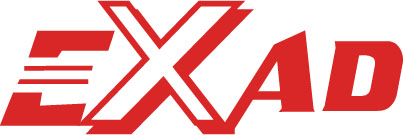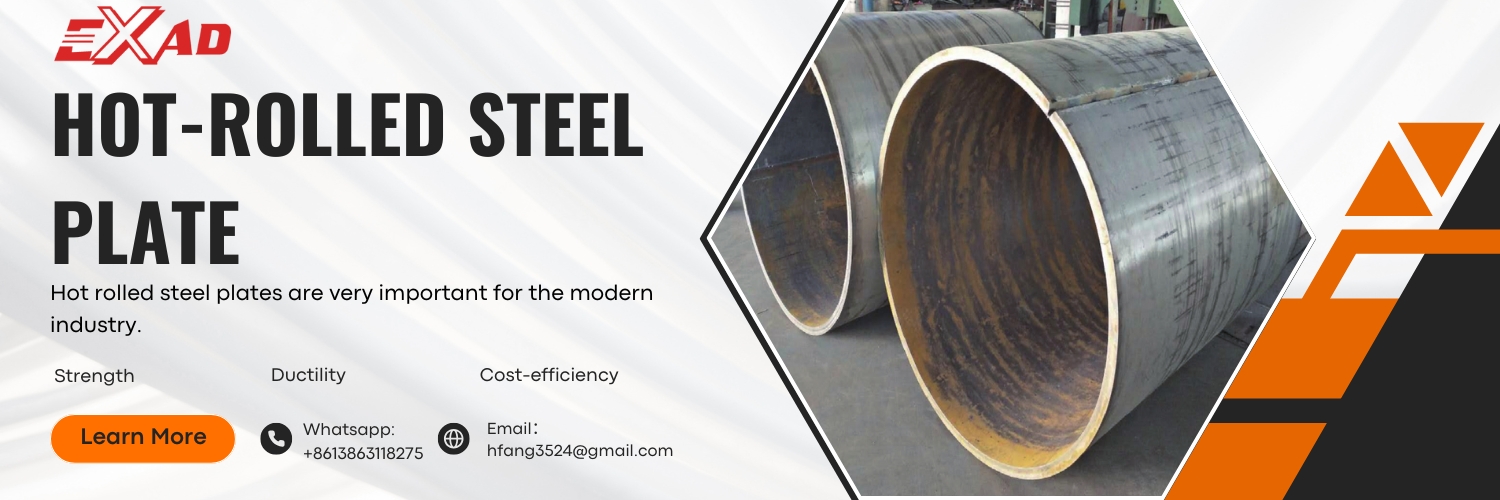Hot rolled steel plates are very important for the modern industry. Strength, ductility, and cost-efficiency have made them popular in the application from construction to automotive, infrastructure, and heavy machinery among a wide array of applications. This article is going to look into the existence, advantages, and general industrial applications of hot-rolled steel to get some insight into why it is preferred in engineering and manufacturing.
What is Hot-Rolled Steel Plate
Hot rolled steel plate is produced by a hot rolling process. In this process, first, the plate is heated and then it is passed through a rolling mill to form the final product. As this is a high-temperature process, change in the internal structure of the steel occurs. Thus, it possesses good mechanical and physical properties.
This is a major material of the industry and application in so many fields. Its main characteristic lies in the high temperature production, resulting in a steel plate with high hardness and good ductility.
How Are Hot Rolled Steel Sheets Formed
The process starts with a massive rectangular piece of metal, known as a billet. The billet is first heated and compressed into a coil while still hot. It is then passed through a set of rolls to reach the desired size.
During the production process, the rolled steel is repeatedly wound into coils and cooled. Continuous rolling creates the desired shape, such as sheet metal or profiles with a thickness of 3 millimeters and above.
Hot rolled steel has its own advantages over cold rolled steel. It requires less force to produce, which reduces costs. It is also easier to produce in large quantities, resulting in lower market prices. However, it shrinks slightly during the cooling process. Its common application scenarios include those where precision is not required, such as frames and rims in automotive parts, beams and doors in construction materials, and railroad components.
Key Advantages of Hot Rolled Steel Plates
Lower cost: Hot rolled steel sheet is generally more cost-effective than cold rolled steel sheet. The hot rolled process uses less energy, making it a more economical option for producing large quantities of steel plate, which is especially valuable in construction and fabrication applications where large quantities of steel are required.
High tensile strength: Hot rolled steel shows very good tensile strength; this fact has contributed towards its increased popularity in applications that require structural integrity besides the ability to take heavy loads. This is a very critical advantage during the construction of buildings, bridges, and other infrastructure.
Ductility and formability: Hot rolled steel sheets are very ductile and can be easily formed into so many different shapes, a characteristic that is beneficial in the automotive as well as the shipbuilding industries, where complex custom shapes are required.
Weldability: Hot rolled steel is well suited for welding applications and can be joined using a variety of welding techniques, such as arc welding, MIG welding, and TIG welding, which is critical in industries that rely on the fabrication of steel structures and components.
Machinability: The hot rolled steel sheet has good machinability enabling facile and efficient cutting, drilling, and other machining operations. This property is highly valued in the aerospace and mechanical engineering industries since these steel components must be precisely produced.
Durability and longevity: Hot rolled steel is very durable and resistant to abrasion, which is important in applications where the steel is exposed to harsh environmental conditions, such as in distillation towers and reactors.
Wide range of sizes and thicknesses: Hot rolled steel sheets come in a wide range of sizes and thicknesses. As such, versatility and flexibility in design and construction can accompany the application of these sheets since they will be used to meet the specific requirements of different projects and industries.
General Specifications of Hot-Rolled Steel Plates:
Thickness: 3mm, 4mm, 5mm, 6mm, 7mm, 8mm, 9mm, 10mm, 11mm, 12mm, 15mm, 16mm, 18mm, 20mm, 25mm, 30mm, 40mm, 50mm,… 100mm, 300mm.
Versatility: hot rolled steel sheets are available in a wide range of sizes and are easy to handle and cut, with many common uses in construction projects and industrial applications, such as bridges, automobiles, ships, pressure vessels and tools of all kinds.
Fast production speeds: the hot rolling process is relatively fast, enabling the rapid production of steel plates, a speed advantage that is evident in industries with tight schedules and high demand, such as construction and infrastructure development.
Low internal stresses: the hot rolling process ends with the steel gradually cooling itself, which normalizes the material properties and releases most of the internal stresses. In this way, the formed steel parts are less prone to cracking or deformation after they have cooled completely.
Common Types of Hot-Rolled Steel Plate
Ordinary hot rolled steel: a widely used hot rolled steel sheet for a variety of applications in the construction and industrial sectors, with mechanical properties and strength that meet the needs of many different application scenarios.
High Strength Hot Rolled Steel: This type of steel is harder better than conventional steels and stronger hence suitable for applications that require good mechanical properties, such as bridges, heavy equipment and other construction projects.
Hardened hot rolled steel: This sort of stainless steel has been heat treated to enhance hardness. It finds a typical application in any field that requires the material to be both strong and able to bear loads, such applications are attributable to structural and mechanical engineering.
What are the Applications of Hot-Rolled Steel
Industrial equipment and pressure vessels: Hot rolled steel plates find a very wide application in the industrial equipment fabrication sector, including storage tanks, stainless steel reactors, pressure vessels, etc. Critical process environments require a material that can take quality welding, has good machinability and maintains strength at high temperatures and pressures—these industries’ requirements have indications for hot rolled steel plates. The chemical processing industry, oil refining, and energy industries are just a few that have related requirements.
Art and Architecture: After hot rolled steel has been fully processed and its surface has been made smooth, it can be surface treated in a variety of ways. It has a distinctive appearance with variations in surface color, which makes it ideal for artistic applications and structural builds, such as metal sculptures. Architects also favor the use of hot rolled steel in certain building designs, and it is quite aesthetically pleasing in industrial and modern style environments, where it can be used to make light poles, shelves, railings, fences, and more.
Automotive engines and components: Hot rolled steel can be used in the automotive industry, often to make frames (also known as chassis), engine components, and seat frames. In these cases, hot rolled steel requires further processing, such as pickling and oiling, to enhance rust resistance and facilitate subsequent painting to enable it to withstand the corrosive and high temperature environments common in automotive applications.
Agricultural and mining equipment: Thanks to its improved strength and formability, this steel is also widely used in agricultural and mining equipment, where manufacturers can use hot rolled steel to build components ranging from simple bends to complex tensile shapes, such as harvesters, tractors, engine components, and gripper bars.
Bridges and infrastructure: The strength of hot rolled steel and its ability to be machined into large components makes it an excellent choice for projects involving infrastructure, such as bridges, where it is often used to create structural profiles, mesh panels and expansion joints, among other components.
Material Handling: Manufacturers prefer to use HRC in certain material handling applications, such as components for forklifts, trams, cranes and elevators, where it is often used to make frames, guide rails, joint bars, etc.
Water distribution: Hot rolled steel is also ideal for water distribution applications, where it is used to make pipes, tubes and other components such as fittings and faucet sections.
Conclusion
In conclusion, hot rolled steel plates offer a remarkable balance of strength, versatility, and cost-effectiveness, making them a cornerstone material in countless industries. From construction beams to storage tanks and beyond, their broad applicability continues to support innovation and efficiency in modern engineering and manufacturing.



